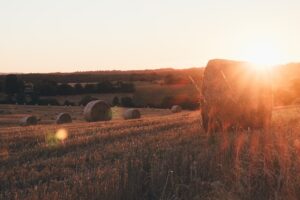Strategies for Efficient Nutrient Management and Forage Selection
go.ncsu.edu/readext?999983
en Español / em Português
El inglés es el idioma de control de esta página. En la medida en que haya algún conflicto entre la traducción al inglés y la traducción, el inglés prevalece.
Al hacer clic en el enlace de traducción se activa un servicio de traducción gratuito para convertir la página al español. Al igual que con cualquier traducción por Internet, la conversión no es sensible al contexto y puede que no traduzca el texto en su significado original. NC State Extension no garantiza la exactitud del texto traducido. Por favor, tenga en cuenta que algunas aplicaciones y/o servicios pueden no funcionar como se espera cuando se traducen.
Português
Inglês é o idioma de controle desta página. Na medida que haja algum conflito entre o texto original em Inglês e a tradução, o Inglês prevalece.
Ao clicar no link de tradução, um serviço gratuito de tradução será ativado para converter a página para o Português. Como em qualquer tradução pela internet, a conversão não é sensivel ao contexto e pode não ocorrer a tradução para o significado orginal. O serviço de Extensão da Carolina do Norte (NC State Extension) não garante a exatidão do texto traduzido. Por favor, observe que algumas funções ou serviços podem não funcionar como esperado após a tradução.
English
English is the controlling language of this page. To the extent there is any conflict between the English text and the translation, English controls.
Clicking on the translation link activates a free translation service to convert the page to Spanish. As with any Internet translation, the conversion is not context-sensitive and may not translate the text to its original meaning. NC State Extension does not guarantee the accuracy of the translated text. Please note that some applications and/or services may not function as expected when translated.
Collapse ▲
Haybale in field
Spring has arrived it is time for that lush green grass to start growing in your pastures/fields. Some of you may have already started spreading fertilizer and lime on your fields/pastures. You do not want to over-fertilize your fields as this could lead to nutrient runoff into the streams and nutrient leaching into the soil. The best way to prevent runoff and nutrient leaching is by starting with a soil sample. Soil samples show how much nutrients your plants need. Soil testing can help you save money in the long run by preventing you from overapplying nutrients that you do not need.
Start by thinking ahead as to what grasses you want growing in the summer months for your livestock. Think about incorporating mixtures into your forage production. Incorporating legumes into your mixtures helps to make nitrogen readily available to plants in the soil. Making nitrogen readily available to plants can help cut costs by not having to put as much nitrogen on your fields.
Some examples of great mixtures include:
- Orchardgrass & Alfalfa
- Orchardgrass & Red Clover
- Orchardgrass & Ladino Clover
- Tall Fescue & Ladino Clover
- Tall Fescue & Red Clover
Click here to read Pasture and Hay Planting Guide for North Carolina written by NC State University. This publication has seeding rate information, planting depth, and best planting dates for the mountains, piedmont, and coastal plains.
Click here to go to an interactive Website titled Planting Guide for Forage Crops in North Carolina. This website allows you to select the region, month you want to plant, and gives you recommendations based on your selections.
As always, if you have any questions about soil sampling, how to interpret your report, or have questions about forages. Please call the office at (828) 652-8104 and speak with Skyler Murray.




